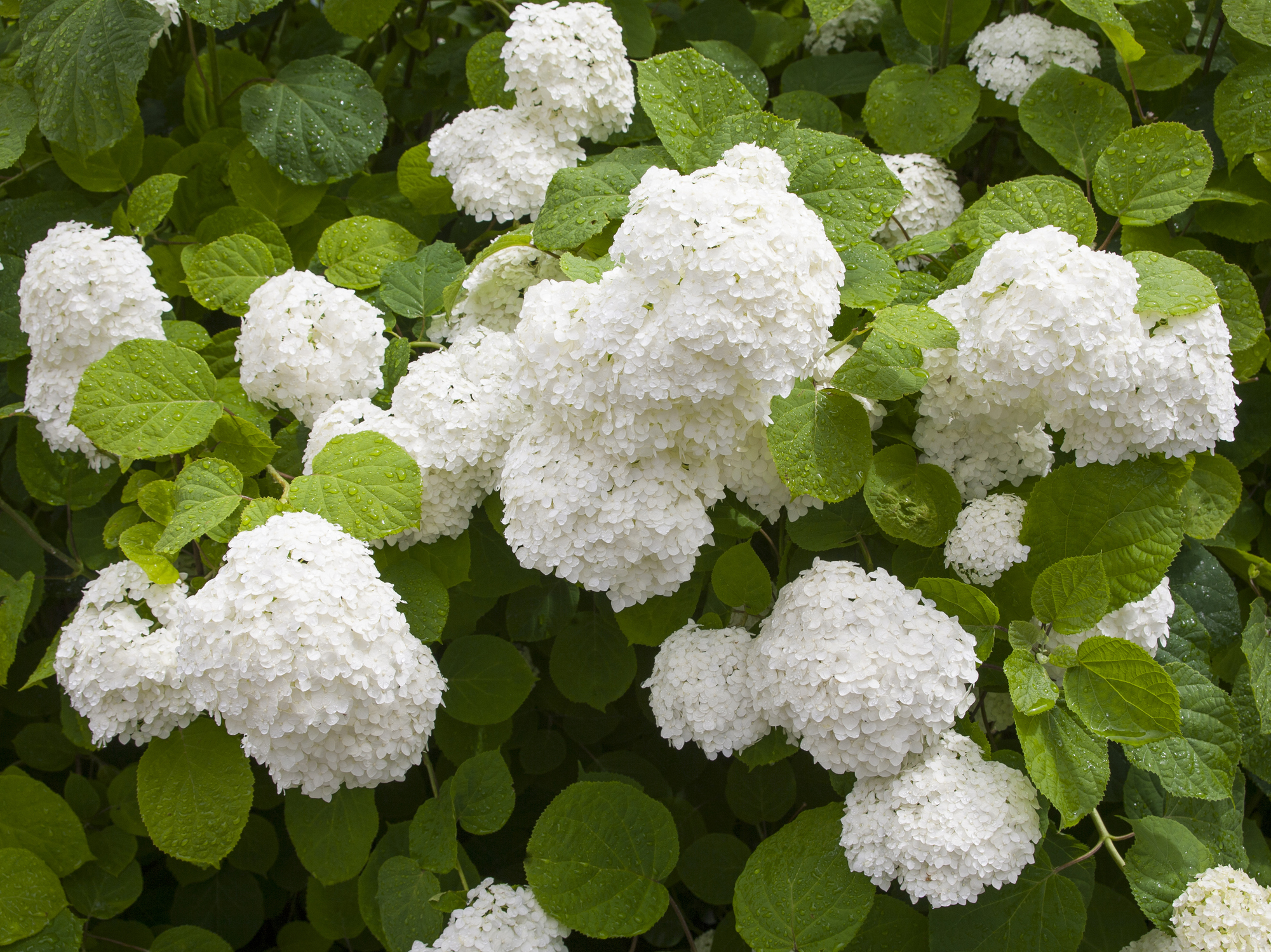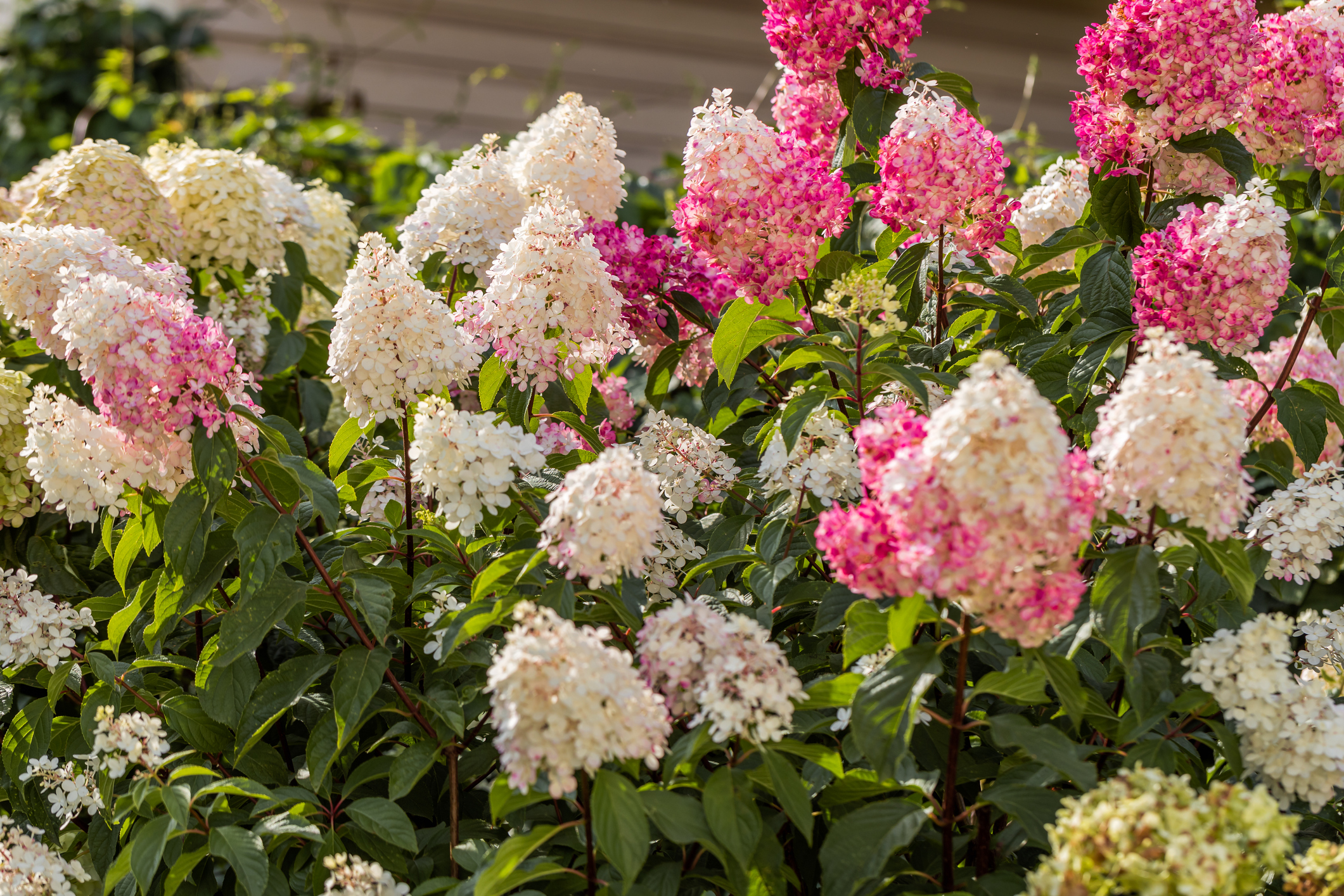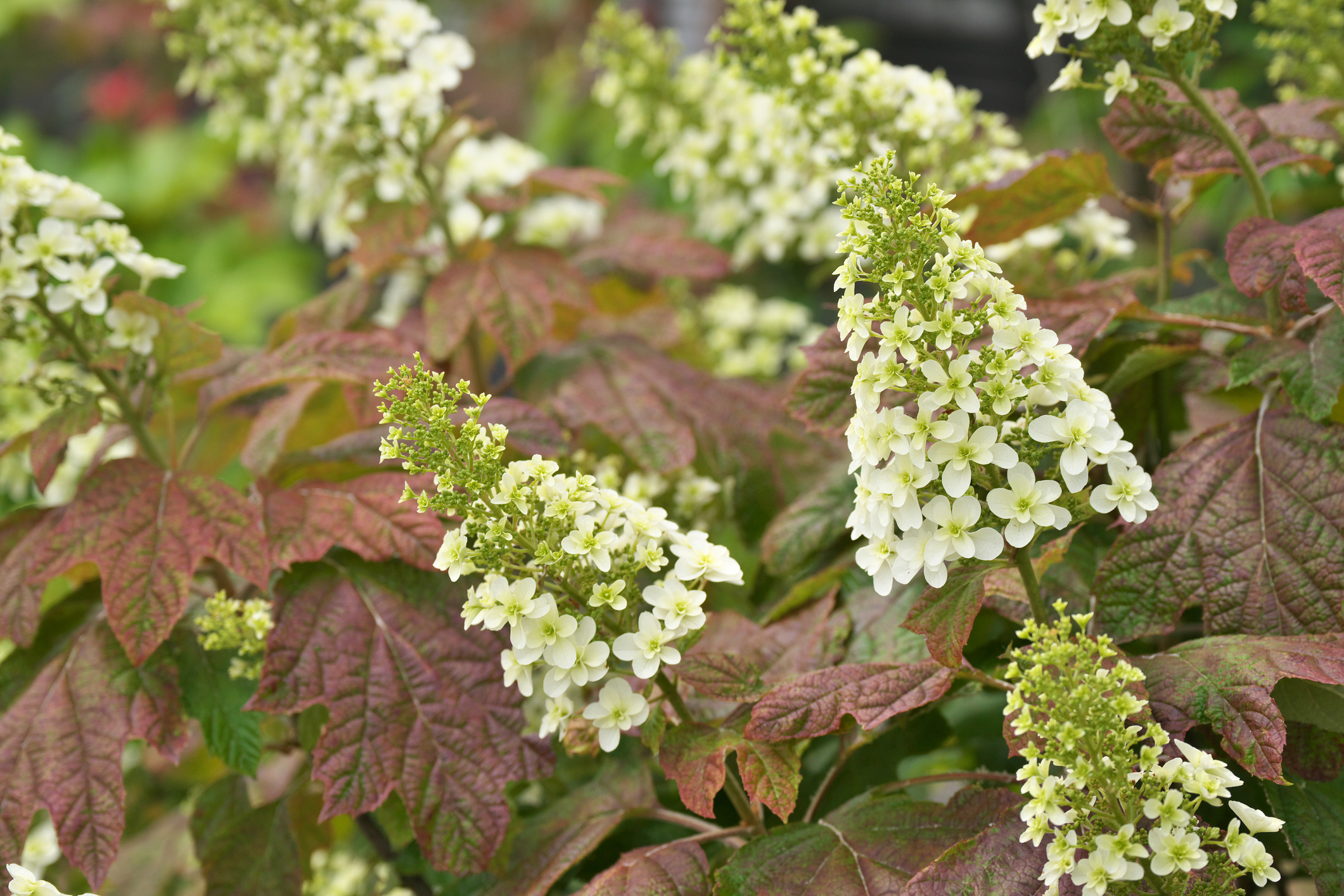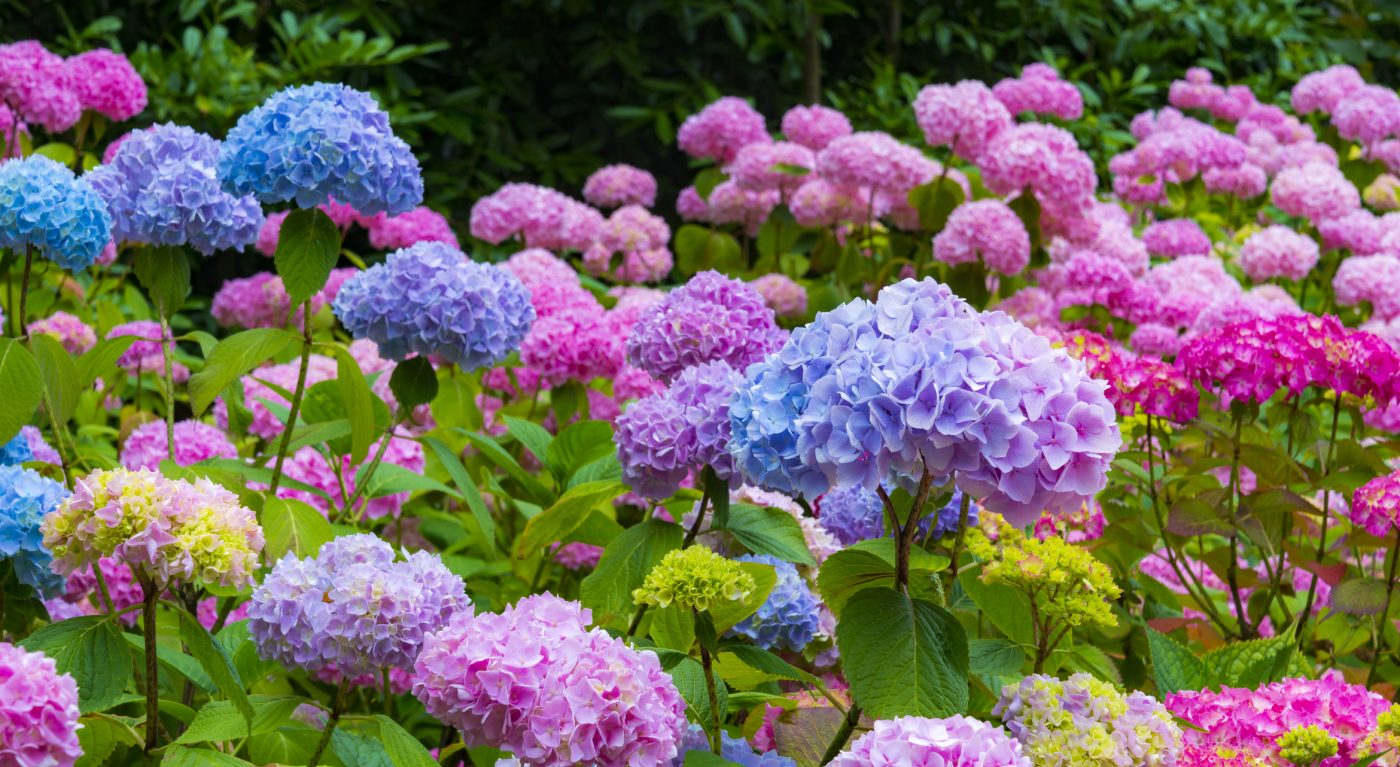Fun Plant Geek Fact, 2021 was the Year of the Hydrangea! Given how 2021 rolled, you might have missed that and I know you will forgive me when I admit that I missed it too. When I finally figured out that the National Garden Bureau had declared 2021 The Year of the Hydrangea, I’ll admit to being a bit put off. Hydrangea have seen such an incredible growth in popularity in the last 15 years or so after the revolutionary introduction of the repeat blooming Hydrangea macrophylla “Endless Summer” that I feel like we’ve spent 15 years celebrating every single one of the newest and coolest Hydrangea to be introduced! But after some reflection, it seems appropriate that Hydrangea finally get their own full year to celebrate as this one species of shrub continues to dominate our nursery sales area year after year!
I’ve gathered some good information for the National Garden Bureaus Fact Sheet on Hydrangeas and added some specific information on cultivars and care for our region.
Hydrangeas are one of the most sought-after shrubs in New England. Known for their nostalgia as well as their modern design appeal, hydrangeas are a perfect fit in the landscape, a perennial garden or used as cut flowers.
The word origin of hydrangea comes from the Greek words for water, hydros and jar, angos because some species are quite water thirsty. If you’ve planted an Endless Summer Series you’ve definitely seen the wilty look they can develop in July and August when we experience hot, dry weather. The hydrangea was first cultivated in Japan but are native to both Asia and the Americas.
Selecting a hydrangea for your garden:
When choosing a hydrangea, keep in mind these things: your growing hardiness zone – we are Zone 5, available space (they can get quite big!), soil makeup, moisture levels and amount of sunlight received per day.
We currently offer more than twenty cultivars of Hydrangeas! The four species listed below are most popular.
Bigleaf (Hydrangea macrophylla):
The most common type in North America, Bigleaf hydrangeas have the classic mophead – or open lacecap – bloom reminiscent of Cape Cod’s signature plant. With blooms of blue, pink, purple, and more, these classic hydrangea flowers bring color to areas with morning sun, some afternoon shade, and moist, well-drained soil. Avoid planting Bigleaf hydrangea on hot, dry, exposed sites or you’ll be guaranteed to see that summer wilt during the heat of the day in July and August.

Well-known varieties include:
Endless Summer Collection includes BloomStruck, Summer Crush and Tilt-A-Swirl.
Smooth (Hydrangea arborescens):
With a big, white (or sometimes pink) pompom bloom, these native hydrangeas are sometimes called ‘Annabelle,’ which is one of the most popular cultivar names. Perfect for full sun or dappled shade location they are much less likely to experience the summer wilt on hot dry days.

Well-known varieties include:
Incrediball, Invincibelle Spirit II, and our all time favorite Annabell
Panicle (Hydrangea paniculata):
Panicle Hydrangea are hands down my favorite species! I love them for their reliable blooming, long lasting blooms and super easy care. This is always going to the species we will recommend if you are looking for a great summer bloom with very little care.
Panicle hydrangeas have gorgeous cone-shaped blooms that emerge white in mid-summer and age to various shades of lime, parchment, pink, and red as fall nights cool down. These hydrangeas are some of the most cold-hardy, many will survive up to zone 3, making this the perfect choice for colder climates. Panicle hydrangea’s upright form means it can be pruned into a tree form too.

Well-known varieties include:
Vanilla Strawberry, Limelight, Pinky Winky and Quick Fire
Oakleaf (Hydrangea quercifolia):
Aptly named, this hydrangea is accented by leaves that resemble an oak tree. One of the earliest blooming species of hydrangea, the incredible foliage also gets amazing fall color. Native to North America, this woodland species is well adapted to the American landscape. In northern or cooler climates, oakleaf hydrangeas do well in full sun to light shade but in southern or warmer climates, some afternoon sun protection is advised. They will grow best in rich, well-drained, slightly acidic soils.

Jetstream, Gatsby Series. Snowflake and Alice
Pruning your Hydrangea:
Pruning: depends on the species of hydrangea:
Bigleaf (Hydrangea macrophylla) require very little pruning and bloom on growth from current and previous years, thus too much pruning removes potential blooms.
Smooth (Hydrangea arborescens) bloom on “new wood” so they should be pruned in late winter or early spring. Pruning encourages new growth, which produces flowers.
Panicle (Hydrangea paniculata) also blooms on “new wood” so they should be pruned in late winter or early spring to the ground or leave the stems 1-3 feet tall for taller plants.
Oakleaf (Hydrangea quercifolia) bloom on previous season’s growth so prune right after flowering.
Pink or Blue Flowers?
One of the most common questions about hydrangeas is how to get blue flowers. You can change a pink hydrangea flower to blue by changing your soil’s pH. (You cannot change the color white or green flowered varieties). Only two hydrangea types undergo significant color changes depending on the soil: Bigleaf and the less common Mountain hydrangeas.
To get blue flowers, there must be aluminum (which is present in most soils) in the soil. In acid, to neutral soils, this isn’t a problem. But in alkaline soils, the roots can’t take up the aluminum and the flowers will be pink. Our native soils are acidic so we will get blue flowers naturally. If you want darker blue colors you can add some Aluminum Sulfate (Espoma Organic Soil Acidifier) in early spring.
For darker pink colors you will need to add a Fast Acting Lime every spring.
Uses in the Garden
Hydrangeas can be used in so many ways in your garden, from a focal point to establishing a border and filling the foundation around your house. And they don’t just have to be planted in the landscape anymore either. Many hydrangeas, especially the newer varieties, are more compact and do incredibly well in a decorative pot. Just be aware that hydrangeas grown in pots aren’t likely to winter over in a container so treat them like annuals and you won’t be disappointed. And don’t forget to cut some blooms for an indoor flower arrangement.
We might be late in celebrating the Year of the Hydrangea but celebrate we will! We’ve got so many new and exciting cultivars to choose from it’ll be difficult to resist them all!
Michelle and The Plant Geeks at Lakeview!

